Let's say I have the following data frame.
> df = data.frame(rowsA = sample(c('A','B','C'), 100, replace=TRUE),
rowsB = sample(c('D','E','F'), 100, replace=TRUE),
colsA = sample(c('G','H','I'), 100, replace=TRUE),
colsB = sample(c('J','K','L'), 100, replace=TRUE))
> head(df)
rowsA rowsB colsA colsB
1 B E I L
2 A E G J
3 A E H K
4 A D I J
5 C F G J
6 A F G J
Is it possible to create a multi-level table of counts?
In excel, it is possible with the PivotTable functionality
I think it possible in python in pandas with the df.columns.levels method.
I also figured out how to do multi-level rows only in R with dplyr (but haven't figured out multi-level columns)
df %>%
group_by(rowsA, rowsB, colsA) %>%
summarise(count = n()) %>%
spread(colsA, count)
# A tibble: 9 x 5
# Groups: rowsA, rowsB [9]
rowsA rowsB G H I
* <fctr> <fctr> <int> <int> <int>
1 A D 5 3 1
2 A E 1 2 1
3 A F 5 8 NA
4 B D 5 5 5
5 B E 2 4 6
6 B F 4 6 5
7 C D 2 6 NA
8 C E 6 5 3
9 C F 4 3 3
